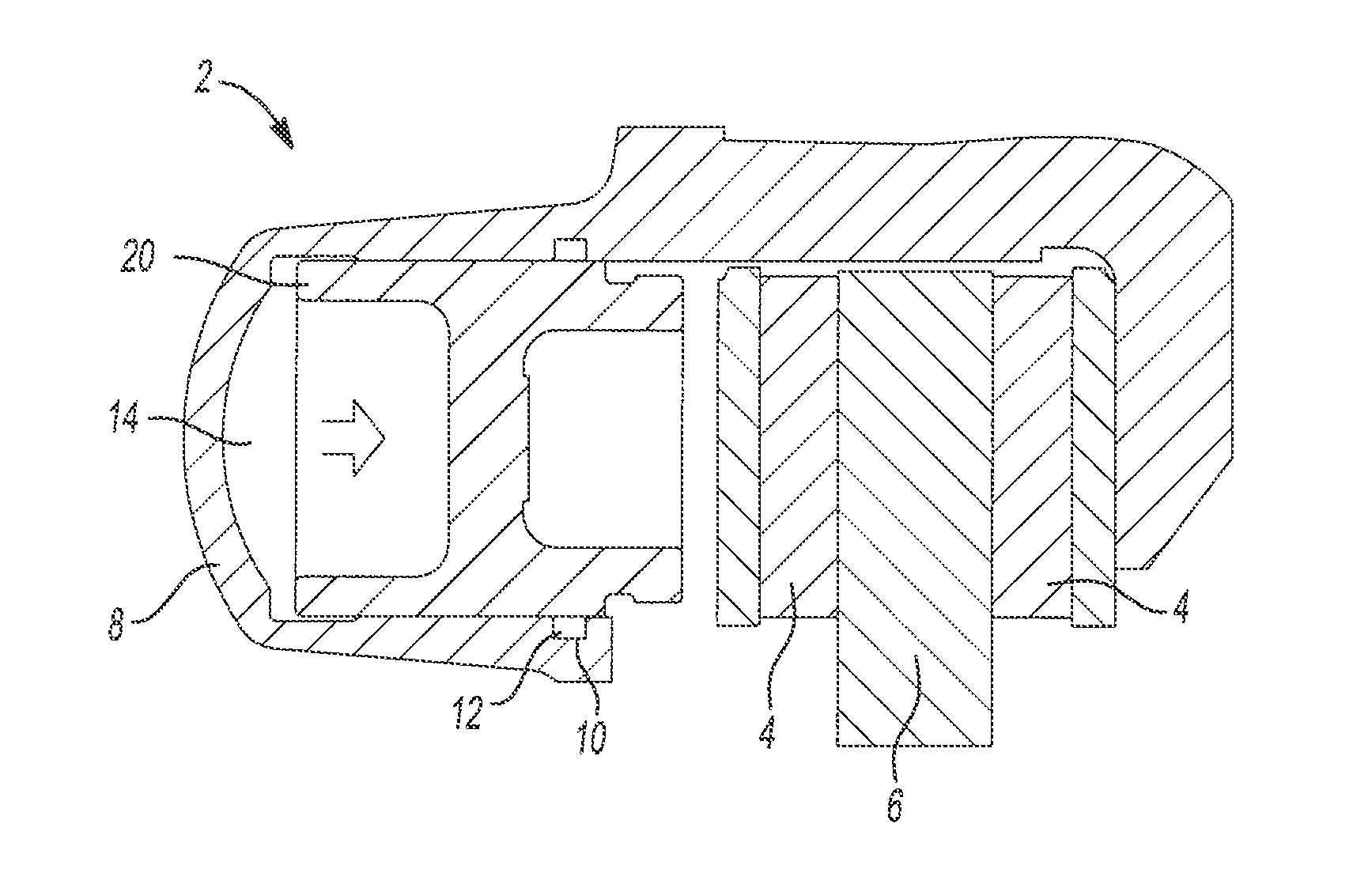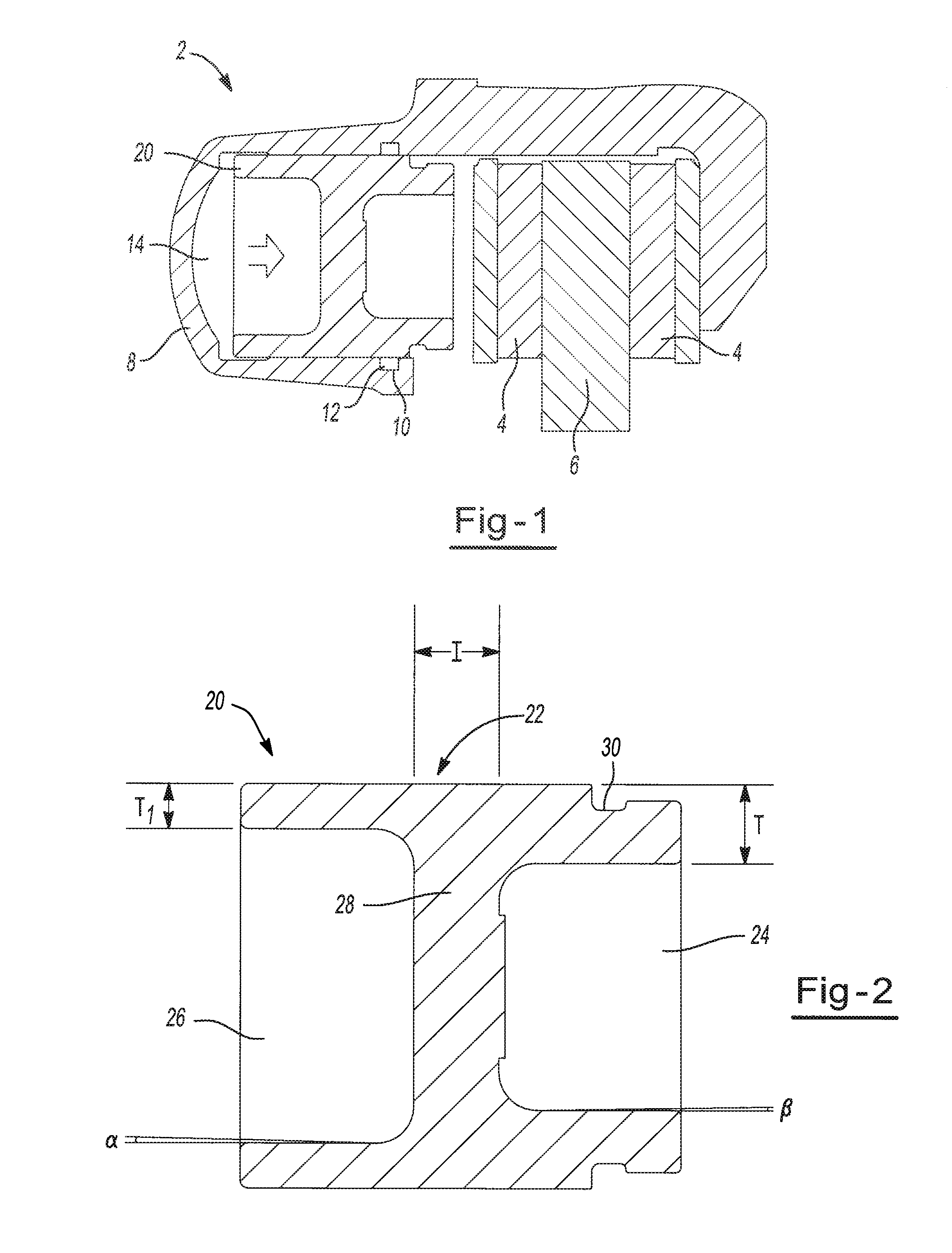Piston with improved displacement properties
a technology of displacement properties and pistons, applied in mechanical equipment, brake systems, transportation and packaging, etc., can solve the problems of reducing the working efficiency of brakes, reducing the efficiency of brakes, and reducing the radial force exerted on the closed end of pistons, etc., to achieve the effect of reducing the number of failures of pistons, reducing the thickness of walls, and reducing the number of failures
- Summary
- Abstract
- Description
- Claims
- Application Information
AI Technical Summary
Benefits of technology
Problems solved by technology
Method used
Image
Examples
Embodiment Construction
[0010]The following description of the preferred embodiment(s) is merely exemplary in nature and is in no way intended to limit the invention, its application, or uses.
[0011]The present invention is predicated upon providing an improved disc brake system and caliper for use with vehicles. For example, the caliper and piston may be used with almost any vehicle (e.g. car, truck, bus, train, airplane, or the like). Alternatively, the caliper and piston may be integrated into components used for manufacturing or other equipment that require a brake such as a lathe, winder for paper products or cloth, amusement park rides, or the like. However, the present invention is most suitable for use with a passenger vehicle (i.e. a car, truck, sports utility vehicle, or the like).
[0012]Generally, a braking system includes a rotor and a caliper body. The caliper body includes an inboard brake pad and an outboard brake pad that are on opposing sides of the rotor. The caliper body further includes a...
PUM
 Login to View More
Login to View More Abstract
Description
Claims
Application Information
 Login to View More
Login to View More - R&D
- Intellectual Property
- Life Sciences
- Materials
- Tech Scout
- Unparalleled Data Quality
- Higher Quality Content
- 60% Fewer Hallucinations
Browse by: Latest US Patents, China's latest patents, Technical Efficacy Thesaurus, Application Domain, Technology Topic, Popular Technical Reports.
© 2025 PatSnap. All rights reserved.Legal|Privacy policy|Modern Slavery Act Transparency Statement|Sitemap|About US| Contact US: help@patsnap.com


